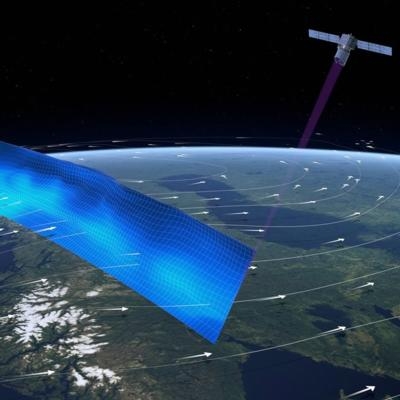Sun, Sep 08, 2019
Company Responds That Communications Error Led To Confusion
A potential collision between two satellites led to a bit of a dust-up between ESA and SpaceX recently, which the U.S. company says was the result of a "bug" in its on-call paging system.

Engadget reports that authorities identified a one in 1,000 chance of a collision between ESA's Aeolus Earth Observation Satellite and SpaceX's Starlink Satellite 44. Holger Krag, head of the Space Debris Office at ESA, told Forbes that when SpaceX was informed of the potential for collision, the company said it would not change the orbit of its spacecraft. ESA fired the thrusters of the Aeolus satellite about half an orbit before the potential collision, if it was going to happen, was anticipated.
While the Aeolus satellite was in position nine months before the SpaceX bird, there are no laws governing right-of-way in space, according to the report. Krag said ESA was not upset by SpaceX's refusal to move, but expressed concerns about how often such an event might happen in the future, given the number of satellites currently in orbit, and the number expected to be launched in the years ahead.
Earlier this week, SpaceX released a statement it hoped would clear up the confusion about its interactions with ESA over the incident.
"Our Starlink team last exchanged an email with the Aeolus operations team on August 28, when the probability of collision was only in the 2.2e-5 range (or 1 in 50k), well below the 1e-4 (or 1 in 10k) industry standard threshold and 75 times lower than the final estimate. At that point, both SpaceX and ESA determined a maneuver was not necessary," the statement said. "Then, the U.S. Air Force's updates showed the probability increased to 1.69e-3 (or more than 1 in 10k) but a bug in our on-call paging system prevented the Starlink operator from seeing the follow on correspondence on this probability increase – SpaceX is still investigating the issue and will implement corrective actions. However, had the Starlink operator seen the correspondence, we would have coordinated with ESA to determine best approach with their continuing with their maneuver or our performing a maneuver."
(Image from file)
More News
Aero Linx: Model Aeronautical Association of Australia MAAA clubs are about fun flying, camaraderie and community. For over 75 years, the MAAA has been Australia’s largest fl>[...]
Touchdown Zone Lighting Two rows of transverse light bars located symmetrically about the runway centerline normally at 100 foot intervals. The basic system extends 3,000 feet alon>[...]
“Discovery and innovation are central to our mission at Virgin Galactic. We’re excited to build on our successful record of facilitating scientific experiments in subor>[...]
How To Get A Story On Aero-TV News/Feature Programming How do I submit a story idea or lead to Aero-TV? If you would like to submit a story idea or lead, please contact Jim Campbel>[...]
Student Pilot Reported That During Rotation, “All Of A Sudden The Back Of The Plane Kicked To The Right..." Analysis: The student pilot reported that during rotation, “>[...]
 ANN's Daily Aero-Linx (05.02.24)
ANN's Daily Aero-Linx (05.02.24) ANN's Daily Aero-Term (05.02.24): Touchdown Zone Lighting
ANN's Daily Aero-Term (05.02.24): Touchdown Zone Lighting Aero-News: Quote of the Day (05.02.24)
Aero-News: Quote of the Day (05.02.24) ANN FAQ: Contributing To Aero-TV
ANN FAQ: Contributing To Aero-TV NTSB Final Report: Cirrus Design Corp SR20
NTSB Final Report: Cirrus Design Corp SR20



